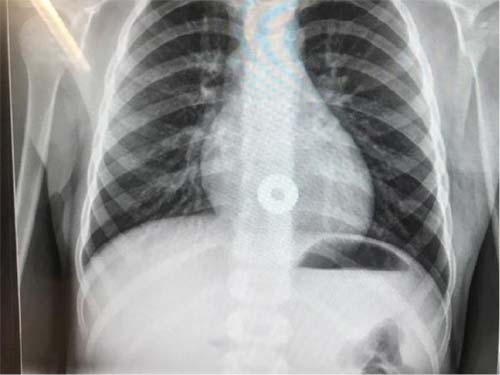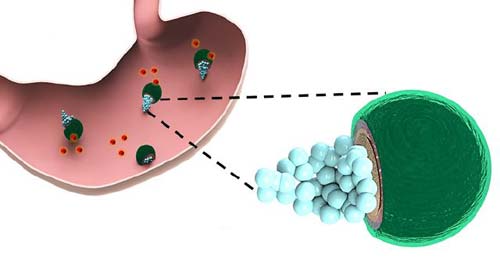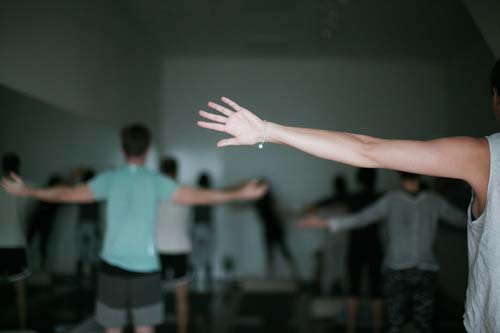“If you’ve been diagnosed with Polycystic Ovarian Syndrome (PCOS), like me, you probably feel like you’ve reached a dead end, alone and an outcast from ‘real life’. But please know, you’re not on your own” – Melissa Madgwick
If you’ve been diagnosed PCOS, like me, you probably feel like you’ve reached a dead end.
At least 1 in 10 women are diagnosed with PCOS during their lives and 10% of women between 12 and 45 are told EVERYDAY ‘You have PCOS’. There is hope. You can get your life back as millions of women have and I have too. In this article I’ll share a few of my experiences, failures, learning and successes on how to heal from PCOS. I’d like to open your eyes to the diversity of polycystic ovarian syndrome as well as natural interventions for overcoming it.
Firstly, you can speak to your health professional about your ideas and craft a plan together as you move forward. Your health professional knows you and your personal medical history. I have not attended medical school nor been licensed by any committee or board or government to give any health advice. I am simply a normal person like you: but I have found the road to recovery.
I have read hundreds of blogs and poured many hours of research into the journey of healing myself. Because this information has made such a difference in my own life, I’ve made it my mission to pass it forward forever and help as many women as possible live the same vibrant healthy life that I now enjoy—that vibrant life that I once feared I had lost.
My PCOS Story
Hi I’m Melissa Madgwick. A real 29 year old woman who is on the other side of healing from polycystic ovarian syndrome – naturally.
I was a professional dancer in ballet, tap and jazz for 15 years. I have a university degree and am a passionate entrepreneur.
I was someone who had it all— active, sociable, loved life, and was healthy as you though you could get—however I started seeing awful PCOS symptoms back in September 2013. It felt as though my life was going down the tube in front of my eyes. I actually hid in my house for 2-3 months because I was so tired, my face and body broke out in severe acne and I gained 8 kilos. I had no clue what was happening.
Although I was eating a healthy diet and taking supplements every day, I did not feel healthy. In fact, I was depressed. For eight long years my ‘normal life’ consisted of terrible acne breakouts lasting three months at a time, terrible menstrual pains and heavy bleeding. My weight was always fluctuating, I had zero sex drive and I was horribly moody. On top of all this, I have an underactive thyroid (only half of the gland is present in my body)!
I became so lethargic I did not want to get out of bed. Although my eating patterns did not change, I started gaining weight. Massive, painful pimples appeared all over my chin and jawline, then spread all over my face, chest and back. They were big painful cysts under the skin, not your average pimples.
Thinking it was caused by a hormone deficiency, I went back on the birth control pill. But the acne persisted fiercely. I visited my local doctor and arranged for blood tests on all my hormones. The results came back and I was shocked. My estrogen, progesterone and estradiol levels – all the vital female hormones – were so low they were actually non-existent! The birth control pill was doing nothing.
What was going on? I asked. My doctor had no idea. All she could give me was a suggestion to take oral antibiotics, and to see a dermatologist for my skin issues and go on Roaccutane ®.
The antibiotics didn’t work. I decided to see an endocrinologist – a doctor who specialises in women’s hormones. After only one consultation, the endocrinologist said my symptoms were screaming out PCOS (polycystic ovarian syndrome). I had heard about PCOS previously. My cousin Leanne from Perth, Australia was diagnosed years ago with this. I remember distinctly she was told she was unable to have a second child. I felt sick.
As soon as I arrived home, I tackled every resource I could find. I read about women who had overcome the symptoms naturally, including facial acne. I learned how to create a regime of eating healthy, low-GI foods, avoiding toxic foods, taking pharmaceutical-grade supplements and doing the right physical exercises. After only one month, my periods started to regulate for the first time since I was 16. I was getting the nutrients my body needed, and I started to feel better.
My endocrinologist arranged a myriad of blood tests. She wanted to know the levels of every single hormone, and thought we should check if I was coeliac or resistant to insulin. She also arranged scans on my ovaries and thyroid gland. In short, she wanted to know if I was suffering from what she thought.
On the day I came in to see my test results, she told me I had a small clump of small cysts in my right ovary. My hormone levels were all out of whack, and my thyroid levels were extremely low. It turned out she was right. She diagnosed me with PCOS (polycystic ovarian syndrome) and insulin resistance. She proceeded to write a prescription drug to regulate my insulin levels and then sent me away.
I waited four weeks to see her. All I got was a fifteen-minute debriefing. She did not take time to discuss how I was going to cope with all my symptoms. Was there a way to heal? Was there a support group? I needed comfort and support and all she gave me was a prescription that was going to act as a Band-Aid.
The drug was called Metformin, and it was supposed to regulate blood sugar levels. Some women take it and they are fine, but after only two days I became terribly sick and lethargic. I craved sugar and was reaching for anything sweet in sight. This wasn’t like me. One afternoon at the local shopping centre, my blood sugar levels were so low I felt as if I was going to pass out in the food court. I bought a salmon wrap and threw it back up within the hour. I discovered Metformin does not agree with sugar or high-carb meals.
After continuing for another two days with horrible side effects, I rang the endocrinologist and decided to ditch Metformin and manage my insulin resistance without drugs.
I have discovered that the right food and nutrition, a good mindset, a supportive environment, and most of all knowledge are the most powerful tools to heal yourself with PCOS. I’m feeling more alive and I know you will too.
6 Steps to Healing PCOS
What do you need to overcome PCOS, like I did? Knowledge is power, so put that first.
Knowledge of who you are, what type of PCOS you have and what your body needs to combat the root cause, is essential to becoming free from hormone imbalances, with the myriad of symptoms that follow.
- Know your type.
Firstly, start with knowing what type of PCOS you have. In my Book ‘Heal My PCOS’ I discuss the 4 main types of PCOS – what they are and how to manage each. Once the insulin resistance and auto-immune issues were addressed in my case, my PCOS symptoms faded.
- I made myself number one.
I found it takes focus and dedication to heal yourself. I would always put everyone ahead of me and hence the reason why I became sick. You cannot rebalance your hormones if your career is Number One, your spouse or boyfriend is Number One, your education is Number One, your friends are Number One, or your kids are Number One. If you care for other people more than you do for yourself, chances are you will not have the energy to heal yourself. Making yourself Number One is the only way to ensure long term success in your relationships and career. You cannot be much help to your kids, spouse, employer, clients, friends or community if you are not looking after yourself first.
- Take charge of your own healing.
Forget about relying on someone else – your doctor, a friend, a spouse, or a pill – to do it for you. They do not have any power to heal you. The power lies within you. We are taught to believe there is a magic solution for every medical problem, and the pharmaceutical industry likes to perpetuate this myth. It takes the power out of your hands and prompts you to reach for your wallet. It trains you to see the symptoms and ignore the causes, and this in turn tends to perpetuate the disease itself. This benefits big pharmaceutical companies, not you.
- Positive mindset and lower your stress.
A positive mindset is so important! When you understand yourself and your body, you’ll be able to view everything about yourself in a very different way. You are in control of your body – and stress is a major cause of hormonal imbalances.
My tip is to lower your stress levels is to start meditating for 10 minutes per day whilst doing deep diaphragm breathing. Do not be overwhelmed! Take baby steps until it becomes a habit.
- Nutrition and supplements.
Your body doesn’t need just any food and nutrition; it needs the right food and nutrition. Cut out the empty calories and instead nourish your body with foods that build you up, give you energy and help eliminate toxins. Read about my Low GI PCOS eating plan in my eBook ‘Heal My PCOS’, then take the time you need to shop for, prepare, and enjoy eating real food. You’ll be surprised how different you feel.
- Nourish yourself.
Once you have appointed yourself captain of your healing, the primary way to turn your life around is to nourish your body with real food. Although there can be secondary causes of hormonal imbalance, garbage food is the main culprit. And while there are several other factors that will help you heal, real food is your most powerful medicine. Eat real food. Your body loves real food. When you digest natural nutrients that your body can actually use, you feel satisfied, comfortable and energised. Real foods contain digestive enzymes that help you digest the food itself. The more organic or raw, the more digestive enzymes they contain.
Processed foods contain virtually no digestive enzymes. If you eat a tomato, you are giving yourself maximum goodness. When you eat tomato sauce cooked on top of pizza or spaghetti, you are not getting much tomato goodness.
Your Road to Recovery
You might ask, can simple tools such as new knowledge, a positive mindset, a supportive community and the right nutrition – really improve your life? IT CAN. I am living proof.
Every woman is different. PCOS reflect symptoms that SOMETHING is out of balance in your body – largely due to what you are eating, thinking and/or how you treat yourself. I’m excited to share new tips in my new edition and to help you on your road to recovery.
Where I am Today
It’s now 2015 and its a few years since my life fell apart when diagnosed with PCOS. I’m more than happy and feel peace with myself for the first time in my life.
I’ve moved interstate from Sydney to Perth (where I’ve always wanted to live), fell in love, I readily focus on my health (as a beautiful gift that I give back to myself), I run a successful branding and digital design business, I am writing more books on various health topics and building a health community on healing people of PCOS, acne and other health related issues I’ve suffered naturally.
| Amanda’s Testimonial“Hi Mel – After only 1 month I don’t have any cyst’s on my ovaries anymore and Mel I have you and your book to thank for that. If it wasn’t for you I don’t think I would have got back to normal. Now I finally believe I have a chance at getting pregnant. I no longer get bloated when I have a period I no longer crave sugar. I truly hope every women buys your book. I can never thank you enough for all your help. In such a short time I’ve seen huge differences. Even my hubby says thank you.” Amanda Humprhies. |
Now it’s up to you
If you can take away at least three things from this chapter and put my advice into practice, you will eventually heal yourself from polycystic ovarian syndrome and improve your health. I know I did after three months!
You can rebalance your hormones, get back your menstrual cycle, feel sexy again and bear children. When you know where your most pressing health issues are, you can take the steps laid out in my chapter and my book to overcome these issues through simple lifestyle changes.
I hope my words give you the strength and knowledge you need to act as your own advocate, and the power to create change in your life… starting today. Many women have healed themselves from PCOS naturally, like me, and you can too.
The tools that helped me heal are in my eBook ‘Heal My PCOS’ which can be found via: www.healmypcos.com. Stay strong and learn to love the beautiful person you are!
P.S Do you want extra support on your PCOS journey?. I have put together a video course which explains the best PCOS diet, the supplements you need to be taking, the perfect exercises to do, downloadable shopping lists you can take to the shops & more!! Hundreds of women have taken up this offer and I’d love for you to kick PCOS for good too.
I’m offering a special discount only for the first 10 LADIES to join me to BEAT PCOS for good!
Click here, to grab this limited offer now: http://bit.ly/1hrGeKk
I wish you all the best & look forward to hearing from you!
With love,
Melissa Madgwick
The post Overcoming Polycystic Ovarian Syndrome (PCOS) – A Real Life Story appeared first on CrowdInk.












